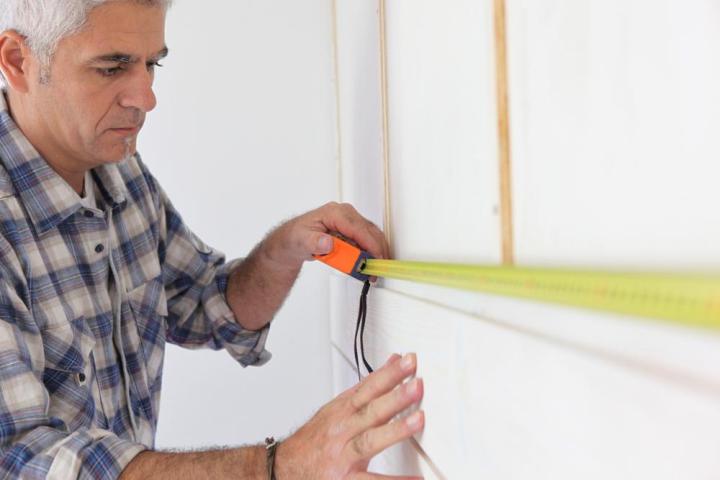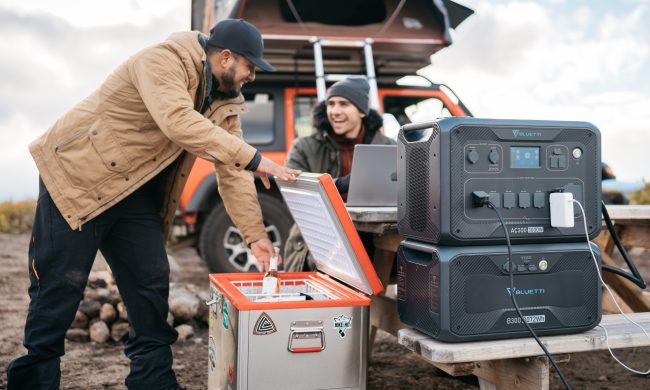
The bottom line is this: You’ll want to locate studs before you mount anything on your wall. In most homes, studs are easy enough to find with a tape measure, flashlight, and a shirt hanger. Here’s our how-to guide to finding studs. We suggest using two or more options to double check your work. Think you’ll make a mistake? Don’t worry, we’ve even provided an option for those of you who miss the stud on the first go.
Use a stud finder
Stud finders are the best way to consistently locate the center of studs. Ranging in price from $10 to $50, an electric stud finder will locate the center of any stud that that is covered by less than 1.5 inches of drywall. Electric stud finders work by detecting changes in your wall width. Another (less expensive) option is a magnetic stud finder, which uses a small magnet to detect nails and screws. Beware: Magnetic stud finders are less effective. They’re essentially miniature metal detectors. Metal pipes or copper wiring will easily trip up a magnetic stud finder. Similarly, using a smartphone app might be better than nothing, but it’s far from foolproof.
That said, there are ways to deduce the location of your studs that are completely free.
Studs are sometimes located next to electrical outlets and light switches
Often times, locating studs is as easy as finding your electrical outlets and light switches. Standard outlets and light switches are fastened to studs. Remove the outlet or switch cover, then look inside the electric fixture. You might spot the wooden vertical beams. Next, draw a straight line from the outlet to your desired mount height. Usually, studs run from floor to ceiling.
Take note: it’s best to double check with another stud-finding technique before nailing into the wall.
Once you find one stud, it’s easy to find the rest of them. The standard space between studs is 16 or 24 inches, although in some homes, the distance between studs is less regular.
Check by sound
Another effective method for locating studs is simply tapping along the wall itself. Tapping on a spot where a stud exists will produce a solid sound. Every place where there isn’t a stud will produce a hollow sound. A good starting place is 16 inches from a corner. For better precision, use a tape measure and mark 12 inches, 16 inches, and 24 inches from the corner. Tap the wall at each distance. You’ll hear a solid sound when you tap the part of the wall that is supported by a stud.
Use a flashlight
It’s also possible to locate studs by flashlight. Be careful, here. This option is less reliable. Place a flashlight parallel to the wall. Look for small dimples or bows where screws are fastened into the drywall. Any dimples in the walls will indicate where the drywall is fastened to the stud. A bright idea indeed.
Use a wire stud finder
If at first you miss, use a wire. It’s always good to transform your mistake into an opportunity. If you miss a stud, this option can be a good alternative. Take a long wire (like a clothes hanger), and fashion it into a right angle. Then insert one side of your wire into the wall and spin the wire in a circle. Note where the wire makes contact. That’s where the stud is located.
That’s it! Did you find your stud? Do you have other stud-finding techniques? Let us know in the comments below!


